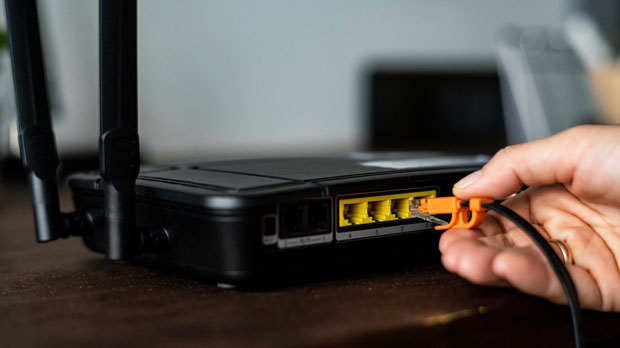In today’s world, privacy and security have become paramount, especially when browsing the internet. Many users choose to use HTTPS proxies to safeguard their online activity. Two popular options are PYPROXY and 4everproxy, but which one is better suited for setting up an HTTPS proxy for browsers? This article provides a detailed comparison of the two, evaluating their features, performance, security, and user experience to help you make an informed decision. Overview of Pyproxy and 4everproxyBefore diving into the details, it’s essential to understand what Pyproxy and 4everproxy offer in terms of HTTPS proxy setup for browsers.- Pyproxy: A proxy service that aims to provide users with easy-to-use HTTPS proxies. It is known for its reliable performance, simple configuration, and high anonymity.- 4everproxy: Offers both free and paid proxy services with a focus on privacy and security. It is particularly popular for users who need proxy access to content across different regions.Both services have their advantages and offer similar core functionalities, but they differ in several key aspects.1. Performance and SpeedPerformance and speed are critical when choosing a proxy service for browsing, as slow proxies can lead to frustrating experiences. Both Pyproxy and 4everproxy offer solid performance, but how do they compare?- Pyproxy: Known for its speed and low latency, Pyproxy typically provides faster proxy connections. This makes it ideal for users who require quick access to websites without noticeable lag. Pyproxy uses state-of-the-art infrastructure to minimize downtime and ensure reliability.- 4everproxy: While 4everproxy offers decent speed, it can sometimes experience slower performance, especially on its free servers. However, its paid versions are typically faster, offering better speeds and reduced latency. Users looking for consistent performance might prefer upgrading to a paid plan.In summary, Pyproxy offers better performance overall, particularly for free users, while 4everproxy may require a paid plan for optimal speed.2. Security and PrivacySecurity is the main reason people use proxies, and both services claim to protect user data. However, there are significant differences in how they approach privacy.- Pyproxy: Known for its commitment to privacy, Pyproxy does not log users’ activities, ensuring that your browsing remains anonymous. Additionally, it offers features like SSL encryption, which is critical for protecting your personal data from prying eyes.- 4everproxy: While 4everproxy also emphasizes privacy, its free version may not provide the same level of encryption or anonymity. Users of the free service might experience less secure connections, making it less reliable for users concerned about data security.If privacy is your priority, Pyproxy offers a more secure environment, especially for free users, as its service guarantees a higher level of encryption and anonymity.3. Ease of Setup and User InterfaceWhen it comes to setting up an HTTPS proxy, ease of use and a clear interface are crucial for users who are not very tech-savvy. Let’s compare the ease of setup and user experience of both services.- Pyproxy: Pyproxy offers a straightforward setup process with minimal configuration required. It provides clear instructions for users to configure proxies for their browsers, making it suitable for beginners. The user interface is clean and easy to navigate.- 4everproxy: While 4everproxy also offers an easy-to-use interface, it can be more complex for first-time users. The setup process involves several steps, especially for users who want to access more advanced features. The interface is not as intuitive as Pyproxy’s, which may confuse users who are new to proxy services.In terms of ease of setup and overall user experience, Pyproxy stands out as the simpler choice for both beginners and advanced users alike.4. Proxy Locations and IP SelectionFor users who need to access content in specific regions, having a variety of proxy locations to choose from is essential. Let’s explore what each service offers in terms of IP selection.- Pyproxy: Pyproxy provides several server locations, but it might not have as many options as 4everproxy. However, for users who require regional access in popular locations, Pyproxy is usually sufficient. It also allows users to choose from different proxy types, such as HTTP and HTTPS, based on their needs.- 4everproxy: 4everproxy offers a wide range of proxy locations across the globe, which is ideal for users needing access to content in multiple regions. Its servers are spread out in various countries, giving users a greater choice of IPs to use.If accessing content in various locations is crucial for your browsing needs, 4everproxy might be the better option due to its extensive list of proxy locations.5. Cost and Value for MoneyPrice is an essential factor for many users when deciding between services. Let’s compare the pricing structures of Pyproxy and 4everproxy.- Pyproxy: Pyproxy offers both free and paid plans. The free plan provides essential proxy features, but it may come with limitations in speed and server access. Paid plans offer better performance, more features, and faster speeds. Prices are reasonable and competitive within the market.- 4everproxy: 4everproxy also offers free and paid plans. The free version, while decent, comes with certain restrictions on speed and access. Paid plans are relatively affordable and provide a much better overall experience with faster speeds, more locations, and better security.When comparing cost and value, both services offer competitive pricing. However, Pyproxy offers a more balanced value for both free and paid users, especially considering its superior performance and security.6. Customer SupportQuality customer support can make or break the user experience, especially when dealing with technical issues. Let’s look at how Pyproxy and 4everproxy fare in this department.- Pyproxy: Pyproxy provides responsive customer support with multiple channels, including email and chat. The support team is helpful and resolves issues promptly, which is crucial for users who may encounter problems while using the proxy service.- 4everproxy: 4everproxy’s customer support is adequate but not as responsive as Pyproxy’s. Users may experience longer wait times for replies, particularly on free plans.In terms of customer support, Pyproxy offers a more reliable and responsive service, ensuring that issues are addressed quickly.Conclusion: Which One is Better for HTTPS Proxy Setup?When it comes to choosing between Pyproxy and 4everproxy for setting up an HTTPS proxy for your browser, Pyproxy generally stands out as the better choice. It offers faster speeds, better security, a simpler setup, and reliable customer support. While 4everproxy is a strong contender, particularly for users needing global proxy locations, Pyproxy provides a more well-rounded and user-friendly experience. Ultimately, your choice will depend on your specific needs—whether it's speed, security, ease of use, or the number of proxy locations.
Aug 08, 2025



































































